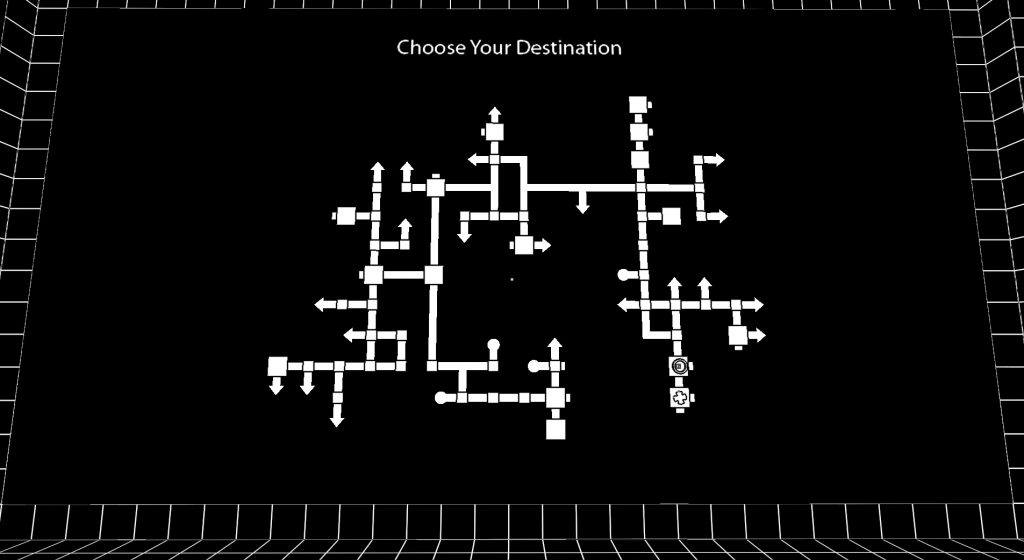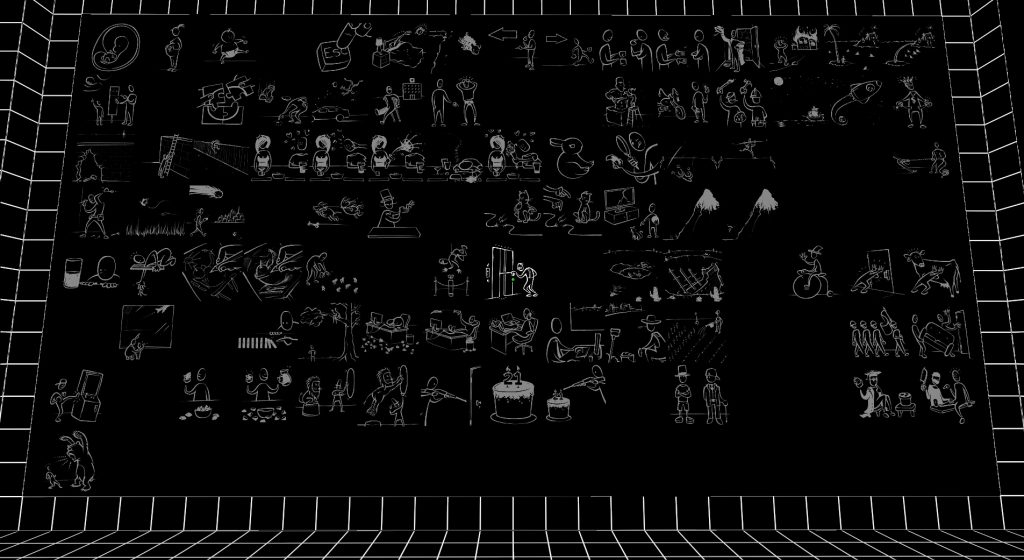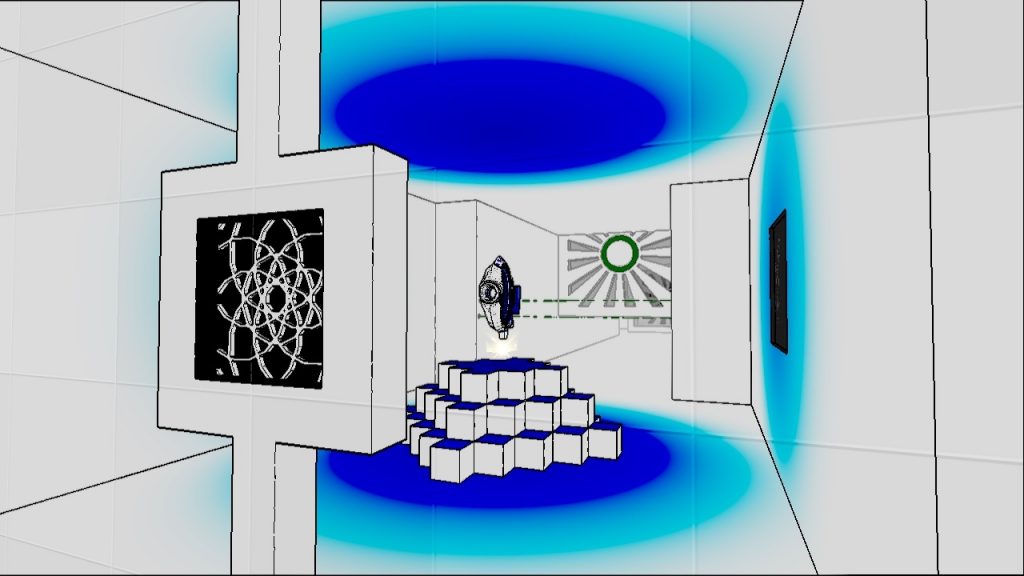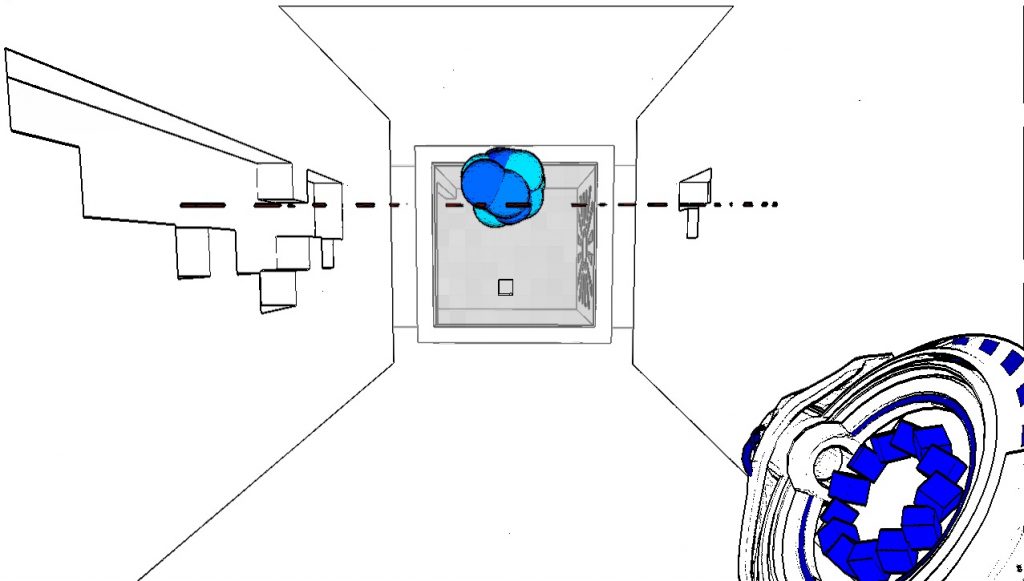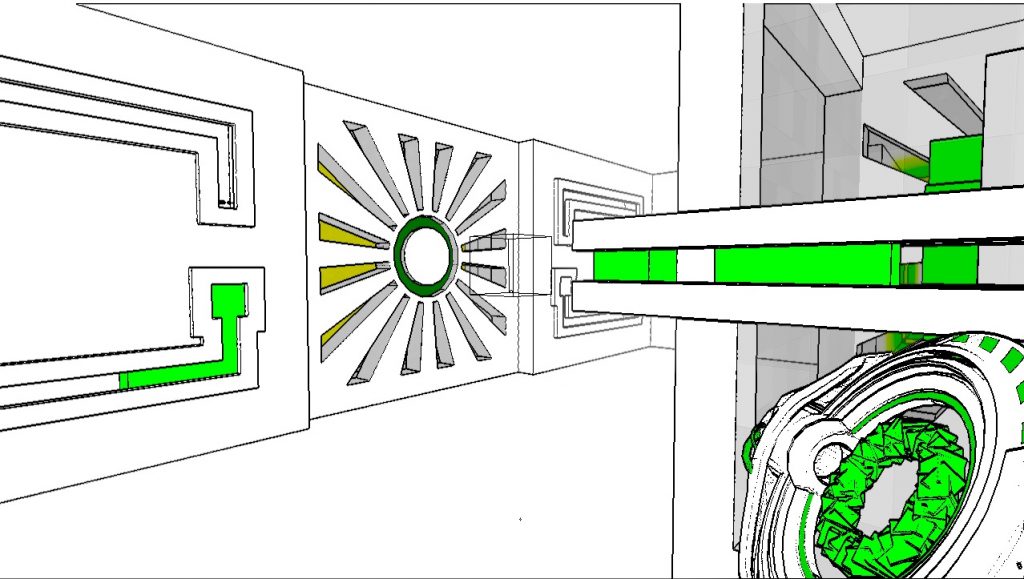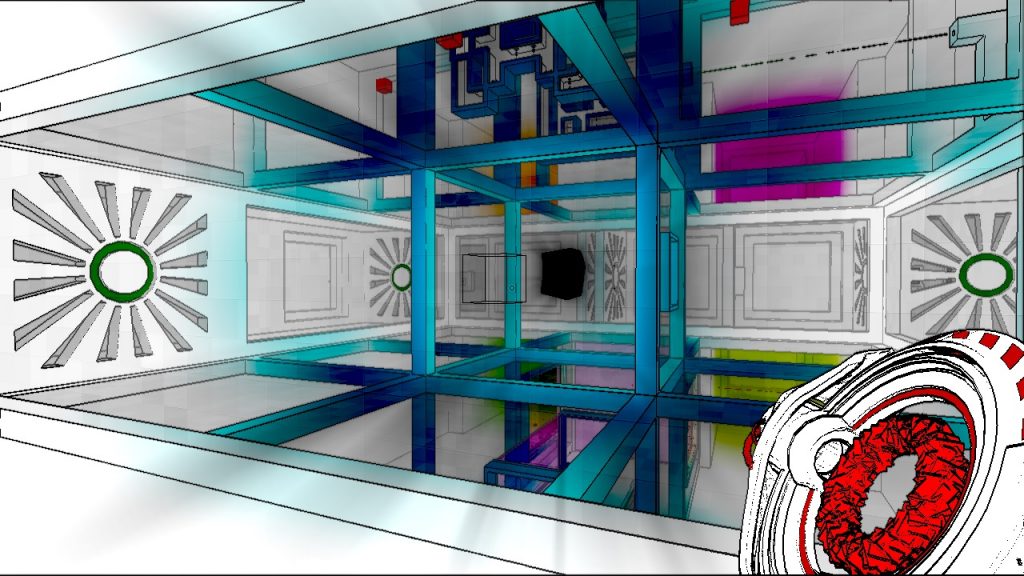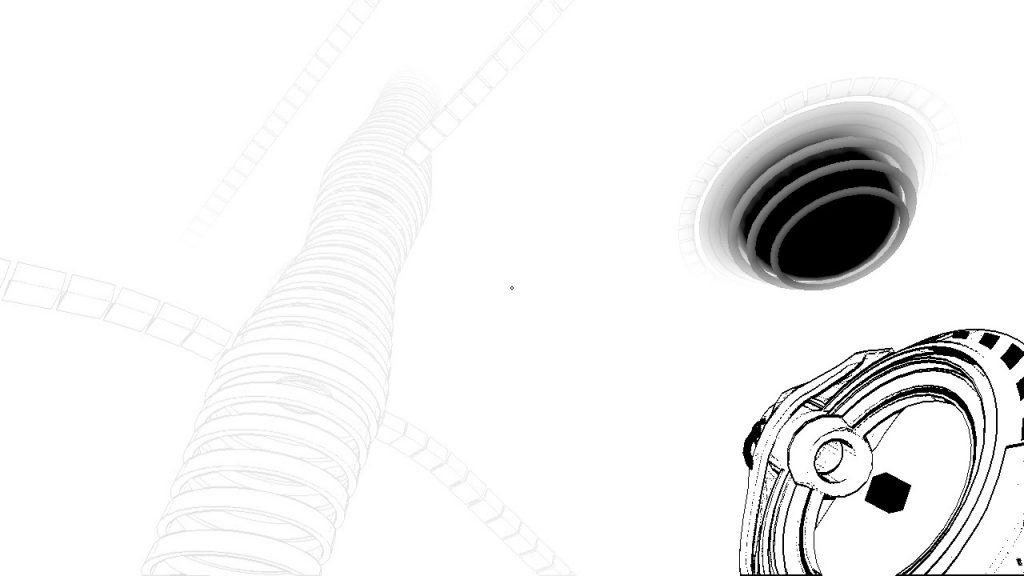Antichamber
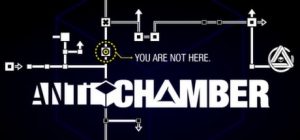
Developer: Alexander Bruce
Publisher: Demruth
Released on Jan 31, 2013
Antichamber is a 1st person puzzle game known for twisting the boundaries of reality using confined spaces and color-coded blocks, designed in a style similar to Escher’s. It’s one psychologically trippy game that makes the player doubt what they’re seeing. Branching paths and endless hallways are everywhere, creating a sense of disorientation for those who just want to reach the end.
Genre: An Indie Puzzle-Adventure Game
Antichamber is a 3-D puzzle platformer built around exploiting the tools of the Unreal engine, which the developer has admitted was meant to change a player’s perspective on 1st person exploration games. The puzzles will put your memory of each room’s layout and understanding of cube mechanics to the ultimate test.
Its minimalist choice of aesthetics, rendering cubes with less shading and more color contrast, has created a surreal environment, blurring the lines between physical space and its perception. The game follows multiple branching paths that eventually lead back to where you came from, subverting the idea of linear progression.

Upon waking up in an unfamiliar room, you have a map that shows the starting point. The playable “character” is devoid of any defining traits, lacking an actual model. The author planned this to keep players engaged in solving the puzzles themselves, to enjoy the interactive elements for what they are.
The wall map only reveals places you’ve already accessed. It doesn’t show how to get there, which you must figure out on your own. The nice part about this map is being able to enter any room from the main menu. If you get stuck, you can hit the “ESC” key to leave the puzzle room, immediately resetting the cube formations.
Hidden blocks may materialize out of thin air, generating mind-bending puzzles which require unconventional solutions, thus adding to the challenge of overcoming the next roadblock. Imagine walking over a pit as a bridge materializes underneath you or finding an eye symbol that blinks and disappears the longer you stare at it.
Every time you explore a new area on the map, you will see signs of people doing things analogous to the previous puzzles you’ve just solved based on your own deductions. For instance, “Look a little harder, and you will find a way forward.” urges players to keep going down a dark tunnel even if there is no light source.
You will find puzzles that appear to be unsolvable and doors that refuse to budge until you find enough cubes to fill in the trip lasers, lighting up those rings on the doors. Obstacles will stop you at every turn unless you approach them with an open mind and some sound logical thinking. If you don’t have the right equipment, there is no way to move forward.
The Blue Matter Gun is the first gun that gives you the ability to collect and place cubes, one at a time. It’s slow but reliable when you want to block an elevator from rising, and it’s a good tool for climbing ledges that are too high to jump over. You will be holding onto cubes taken from another section, like a solid blue wall, which serves as a resource if you run out of them during the middle of a puzzle.
One of the puzzles you’re able to solve is Logic 101 because you’re just blocking a few doors so they don’t close once you cross the dotted trip lasers. In “The Missing Pieces”, you’re required to collect cubes and fill in the holes scattered around a hallway in order to unlock a door. Walking down the path, you might hear sounds of birds chirping or water splashing, which is unexpected for an abstract puzzle game.
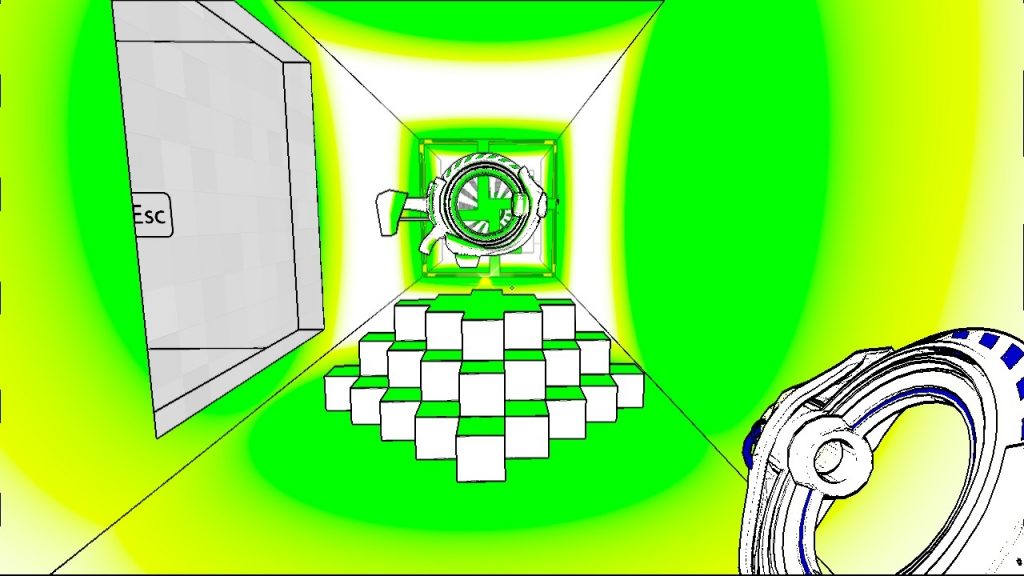
The obstacles are downright strange at times; a blue mass of floating particles will fly apart, breaking off walls whenever you run too fast, an elevator spawns from the ground, acting as a bounce pad for you to push it further down. The Green Matter Gun provides an advantage over the blue one, in that you’re free to release multiple cubes in succession, filling up wall slots that contain lasers, as seen in Learning to Draw.
Sometimes, you’ll come across cubes that regenerate right after you remove them. This is quite helpful if you need more resources to finish puzzles like the one shown above. Fortunately, that big ball of cubes in the center is also unlocked in a similar manner via sliding the gun across as you walk around.
The green gun grants an ability called “Cube Farming” for creating additional cubes, by drawing a closed square resulting in squares covering the inside area. Too bad it won’t help you get rid of those stubborn, crisscrossing cubes, capable of regenerating immediately to fully block your path.
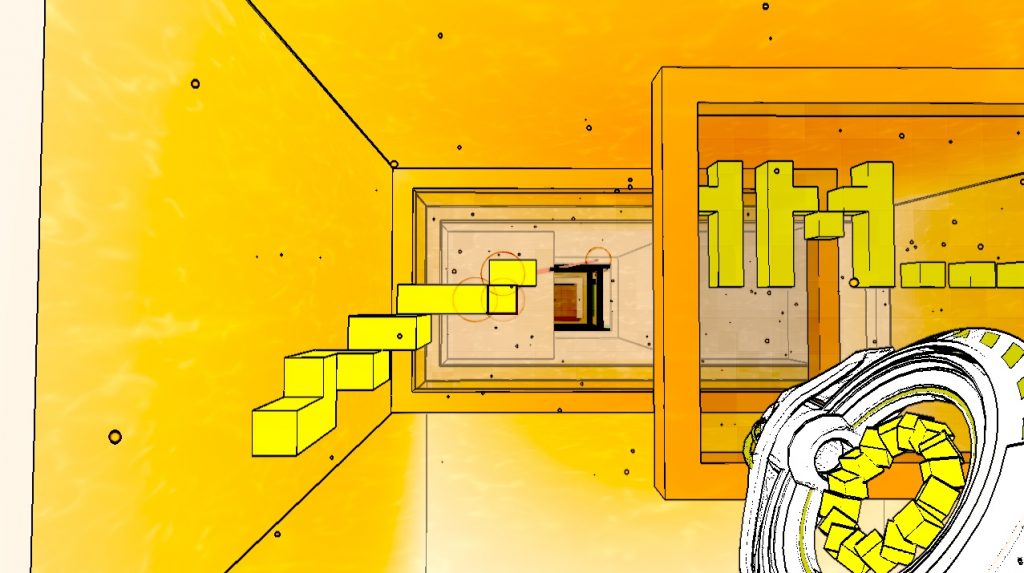
The Yellow Matter Gun adds another ability to negate the effects of force fields (aka emancipation grills), known to vaporize any cubes you’re already holding. It’s also arguably the most difficult gun to obtain in the game. But now, you can transport cubes over those force fields, watching as they reach the other side where a door puzzle awaits.
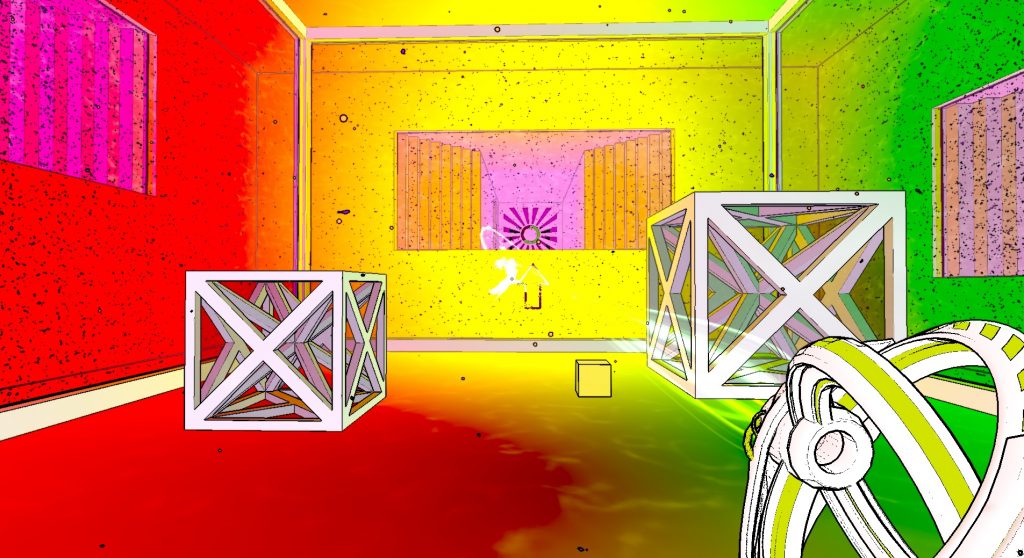
The longer you play Antichamber, the more graphics become distorted and trippy, like this color scheme in Four Different Exits. It’s pretty much the gateway to four different puzzles. The only problem is figuring out how to get there using a single yellow cube. After all, the force field prevents you from taking cubes into this room.
But if you’re too lazy and don’t feel like solving it, there are walkthroughs on the Wiki thanks to some dedicated fans. I usually don’t like to use cheats, except as a last resort when all else fails. It isn’t exactly clear what each gun does unless you do some experimenting on the side. If a yellow wall is in front of you, you’ll need the yellow gun to drag out a series of cubes, in turn, removing other cubes linked to those.
The most fun you’d get from solving a tough puzzle is by discovering a secret room, rewarding you with new signs to add towards your huge collection on the main menu. The Red Matter Gun, located at The Highest Point, is the most efficient gun: It lets the player create entire walls of cubes out of a few through multiplication factors. Of course, it’s also possible to crash the game by making a wall too large.

Be sure to check every nook and cranny for mechanisms including cube detectors, elevators, bounce pads, and transporter windows which I will explain next. Transporter windows are the equivalent of viewing portals, teleporting you into the room you’re seeing through them. Obtaining the Blue Matter Gun involves looking into a transporter window to get past a glass barrier.
Before I forget, this ominous-looking black cube, floating inside the grid, is known as the “Black Ghost”. Approach it and you’ll hear creepy chanting. But too bad the game never reveals what exactly it is. There’s some kind of metaphor hidden behind the last section, where the outlines are softer and the platforms repeat themselves.
Many of the hardest puzzles are entirely optional, leading you to a secret Dev Room where you get to see how the game has evolved since its beta testing phase. There are several detours or alternative routes to help you navigate around existing obstacles you can’t get past yet. The soundtrack is peaceful but sometimes suspense-building, like out of a horror film.
No wonder Antichamber has won an honorable award in “Make Something Unreal”; the more places you explore, the less familiar your surroundings become. (Unless everything is one big feedback loop.)
